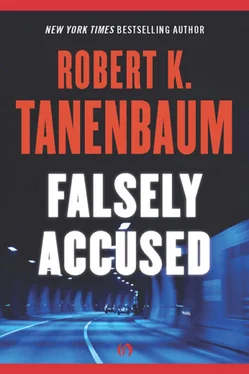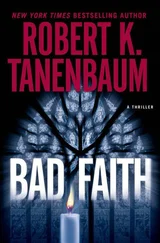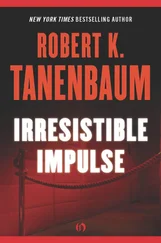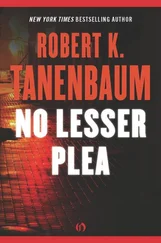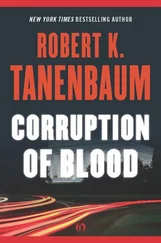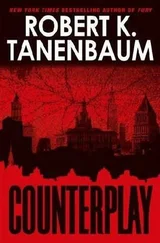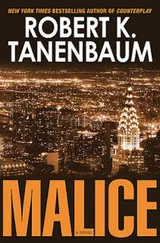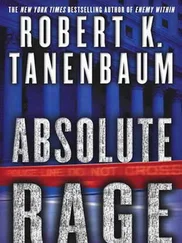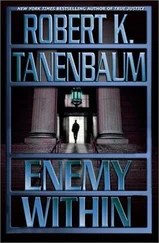Robert Tanenbaum - Falsely Accused
Здесь есть возможность читать онлайн «Robert Tanenbaum - Falsely Accused» весь текст электронной книги совершенно бесплатно (целиком полную версию без сокращений). В некоторых случаях можно слушать аудио, скачать через торрент в формате fb2 и присутствует краткое содержание. Год выпуска: 2010, Издательство: Open Road Integrated Media, Жанр: Криминальный детектив, на английском языке. Описание произведения, (предисловие) а так же отзывы посетителей доступны на портале библиотеки ЛибКат.
- Название:Falsely Accused
- Автор:
- Издательство:Open Road Integrated Media
- Жанр:
- Год:2010
- ISBN:нет данных
- Рейтинг книги:5 / 5. Голосов: 1
-
Избранное:Добавить в избранное
- Отзывы:
-
Ваша оценка:
- 100
- 1
- 2
- 3
- 4
- 5
Falsely Accused: краткое содержание, описание и аннотация
Предлагаем к чтению аннотацию, описание, краткое содержание или предисловие (зависит от того, что написал сам автор книги «Falsely Accused»). Если вы не нашли необходимую информацию о книге — напишите в комментариях, мы постараемся отыскать её.
Falsely Accused — читать онлайн бесплатно полную книгу (весь текст) целиком
Ниже представлен текст книги, разбитый по страницам. Система сохранения места последней прочитанной страницы, позволяет с удобством читать онлайн бесплатно книгу «Falsely Accused», без необходимости каждый раз заново искать на чём Вы остановились. Поставьте закладку, и сможете в любой момент перейти на страницу, на которой закончили чтение.
Интервал:
Закладка:
“Contact her?”
“Dirt, darling, dirt. On Sandy. They flung enough at you, we’ll fling some back. Oriana? Ariel? Something like that. I’ll get the girl to look it up tomorrow.”
The offices of Bohm Landsdorff Weller were located in a red-brown sixty-year-old building at 113 William Street. The firm occupied two floors, eighteen and nineteen. The building was undistinguished, as was the firm itself. A very small nuclear blast set off at the junction of Wall and William would destroy several thousand such firms, each with their one or two floors of offices, their ten or so partners, their tax or merger or tort departments, their fake English paneling, their Aubusson or oriental carpets, their well-framed Spy caricatures or Daumier prints or sporting paintings, their starched secretaries and exhausted paralegals, their remarkable annual incomes. Such firms almost never have their names displayed in the pages of the Times or the Wall Street Journal; nor do they appear as the main contestants in the famous cases of the day, where giant corporations meet in titanic battle. Yet so incalculably immense is the river of money that flows through lower Manhattan that even the most delicate, pigeon-like sips from it, of the sort taken by such modest enterprises as Bohm Landsdorff Weller, were sufficient to keep the twelve partners thereof in stupefying wealth.
These firms are like wildebeestes or buffalo in a herd, all the same yet all slightly different to the naturalist’s trained eye. Some are preeminent in taxes, others in trusts or torts or contracts; some will destroy a union for you, others will be happy to create a corporation. (But if you’re thinking of getting rid of your spouse, by murder or divorce, or selling the story of how you did it to the movies, you want a different kind of law firm. If you are a good client, firms such as Bohm Landsdorff will supply you with a reference to lawyers of that sort from the fat Rolodexes they all maintain.)
In this office, in a cherrywood-furnished room on the nineteenth floor, Karp worked, not happily, but well and lucratively. He was making more money than he ever had in his life, except during the six weeks he had spent as the twelfth man on an NBA basketball team, investigating a murder and getting paid to play the game.
Karp was unhappy because he had in his life found only two things that he could do a lot better than most people and that he genuinely enjoyed doing: playing basketball and prosecuting criminals, and fate had dealt him a hand that prevented him from doing either. It was basketball, however, that had, in an indirect way, landed him his present job. He had been shooting baskets one Saturday at the Fourth Street courts in the Village, and a slight man with a friz of ginger hair around his bald pate had approached him on the asphalt with a “you won’t remember me” and a look of something close to worship on his thin face. It was certainly true that Karp didn’t remember him, but Steve Orenstein remembered Karp. Orenstein had spent one season warming the bench on the suburban high school team of which the young Karp had been the chief ornament. That morning they played an easy game of horse while chatting and discovered that Orenstein was working at Bohm Landsdorff Weller, or B.L., as he called it, and that Karp was at liberty. Orenstein asked whether Karp had ever thought of going into civil litigation, to which Karp had frankly replied that it had never once crossed his mind, and Orenstein had mentioned that if it ever did happen to cross, his firm was badly in need of someone who knew what to do in a courtroom. Two weeks after that, Karp, bored with unemployment and stony broke, had come by for an interview and been snapped up.
At B.L., Karp found that he was as much a specialist as the little men that NFL teams hire to kick field goals. Most lawyers of the type that populate downtown law firms never come anywhere near a trial. There are quite distinguished and successful lawyers in that milieu who have never once argued a case before a jury during a long career. Among such lawyers, therefore, trials signify a breakdown of the gentlemanly process of negotiation whose aim is settlement out of court, during which agreeably long process both sets of clients can be gently fleeced and neither law firm embarrassed by the possibility of a public defeat. But this glowing surface of collegiality is, of course, underpinned by the grim cast-iron structure of the trial system, and so it is necessary for the firm to have at its disposal at least one litigator who is not strictly speaking a gentleperson at all, and who, it may be given out along Wall and William and Pine streets, is kept chained in a tower room and fed raw meat against the day on which he will be unleashed against the firm’s rivals in an actual courtroom, to raven and destroy. At B.L., this was Karp.
Karp had tried but one case in the sixteen months he had been at B.L. This was an affair in which an investment house had run an initial public offering of stock in a technology firm known to have a set of potentially lucrative patents. It turned out that the firm did not quite have all the said patents and that the ones they did have were not quite as succulent as advertised. The investors cried foul when later the stock prices went into the toilet; the investment house claimed breaks of the market. B.L.’s negotiators offered an out-of-court settlement-restitution plus interest. When the investment house declined this civilized deal, B.L.’s people sighed and rolled out Karp. Six months later, he had won not only restitution plus interest but a punitive award, of 4.3 million dollars. It turned out that the investment house had known all about the defective patents before offering the stock. A criminal fraud case was pending, and the head of the investment house, whom Karp had treated, during a hideous day and a half on the witness stand, to the sort of cross-examination usually reserved for members of the unmanicured classes, was resting in a convalescent home.
Since then it had not been necessary to use Karp again. He kept busy, however, keeping track of a variety of cases where the threat to go to trial was a useful ploy, much as the men who, in those waning days of the 1970s, sat in North Dakota missile silos and practiced the annihilation of Kiev.
The major on-deck case at the moment was Lindsay et al. v. Goldsboro Pharmaceutical Supply Company, a cat’s cradle involving tainted insulin, three multinational drug companies, the largest insurer in the nation, eight thousand or so aggrieved diabetics, their families, heirs, and assigns, and approximately 1.6 billion dollars in claims and counterclaims. Karp had mastered the case with a speed that amazed his colleagues and had expressed confidence that, should the elaborate negotiations then ongoing break down, he was prepared to try the case and win. Nobody at B.L. wanted that to happen, least of all Karp. Such a trial could take three to five years, and he preferred the challenge of the new. When he had been in charge of the Homicide Bureau, he might, during an average killing year, have been involved in several hundred trials and might have actually prosecuted as many as twenty.
Being a sort of utility for B.L., Karp was considered part of the overhead and was not expected to drum up business. Nor did he. Thus he was startled when Murray Selig called him on the phone to say he needed a lawyer. After recovering from his amazement, Karp was actually pleased, and told Selig to come by and chat.
Selig came in the next morning. Karp rose from behind his desk and greeted him warmly and invited him to sit. Selig was glad to do so. Like many men of less than moderate size, he was made uneasy on a visceral level by males the size of Karp. Karp was a little taller than six foot five, with big shoulders and long arms and legs and first baseman’s mitt-sized hands. The two men made small talk for a few minutes-sports, their families, mutual friends. They had any number of these, since Selig had worked closely with Karp on dozens of cases when Karp had been with the D.A. and Selig was an assistant C.M.E. During this time Selig took the opportunity to focus his keen observer’s skills on the figure of his interlocutor.
Читать дальшеИнтервал:
Закладка:
Похожие книги на «Falsely Accused»
Представляем Вашему вниманию похожие книги на «Falsely Accused» списком для выбора. Мы отобрали схожую по названию и смыслу литературу в надежде предоставить читателям больше вариантов отыскать новые, интересные, ещё непрочитанные произведения.
Обсуждение, отзывы о книге «Falsely Accused» и просто собственные мнения читателей. Оставьте ваши комментарии, напишите, что Вы думаете о произведении, его смысле или главных героях. Укажите что конкретно понравилось, а что нет, и почему Вы так считаете.
